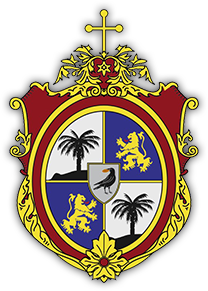Pilisszentlélek and Klastrompuszta

The Pilis Mountain is between Budapest and Esztergom, and it is quite famous for the Pauline monasteries. Now, let me tell you about a fortified Pauline monastery at Pilisszentlélek and another sanctuary, a Pauline church at Klastrompuszta which is located just a few kilometers from each other. For many people, the Pilis Mountain in Hungary is a mystical place, a sacred forest where the founder of the Árpád dynasty, Chief Árpád is buried. The low hills are surrounded by ancient royal seats like Visegrád, Esztergom, Székesfehérvár, and Buda.

There was only one monastic order established in Hungary, the Order of Saint Paul the First Hermit – known also simply as Pauline Fathers and the hills of the Pilis were their birthplace in the 13th century. They were the so-called White Monks who were banished from Hungary in 1783. The Order could survive in Poland in Jasna Góra where they are called Paulini – Zakon Świętego Pawła Pierwszego Pustelnika.

Now, let us talk about the first church of the White Monks at Klastrompuszta and about their fortified monastery that is just a mile away from it, near Pilisszentlélek. Both buildings are in ruins now but they are being revered by many pilgrims.
The Church and Monastery at Klastrompuszta

Literally, Klastrompuszta means „a deserted place (=puszta) of the Monastery (=klastrom)” as it has been destroyed and uninhabited for a long time. It was Blessed Özséb (Eusebius) who established the Pauline Order, by summoning the hermits living in the caves of the Pilis in 1250. After the death of Blessed Özséb, he was buried here, as were his two most outstanding disciples, Benedek and István.

The church was named after the Holy Cross, and it was the very first monastic building of the Pauline monks, also their center between 1250 and 1304. During these years, the head of the order, the general, was here, while the monastery had a special foreman, a prior. Özséb was the general of the Paulines from 1250 to 1270, and the prior was Benedek. After the death of Özséb, Benedek became the general until he died in 1290.

In 1285, the convent was burned by royal armies. In 1287, The Pauline Holy Spirit Monastery was built on the border of Pilisszentlélek (Szentlélek=Holy Spirit) just a mile away, 1287, and it was inhabited by the monks of the Holy Cross Monastery who lived in Klastrompuszta.

King László IV donated the land of Üllőkő to the Paulines in 1289. After Benedek’s death, István became the leader of the order, confirmed in his office by Archbishop Ladomér of Esztergom. On behalf of István, Lőrinc, the new Prior of the Holy Cross Monastery, asked the Archbishop of Esztergom, Ladomér, for special regulations for the Pauline monastic orders living in the diocese of Esztergom. The new regulation was made in 1297.
István died in 1300 and he was also buried in the Monastery of the Holy Cross. In 1304, the new chief of order, Lőrinc, founded a new monastery near Buda, which soon became the final center of the Pauline order. The monastery was burned down in 1526 by the Turks. The trees overgrew the ruins and when the Paulines returned after the Ottoman wars, they couldn’t find the old monastery. Instead, the remains of the Cistercian monastery of the village of Pilisszentkereszt on the other side of Pilis were considered to be the remains of the Holy Cross monastery.

To this day, the nearby village of Kesztölc preserves the medieval presence of the Paulines in the settlement, as the coat of arms of the Paulines appears in the coat of arms of Kesztölc. In the shield of the COA, there is a double mound at the bottom of the shield which is a symbol of the Bifurcated Mountain. There are two lions on it, they are from the coat of arms of the Pauline monastic order.
The Fortified Pauline Monastery of Pilisszentlélek
Like more than 60% of Hungary’s territory, the Pilis Mountain belonged to the kings of the Árpád Dynasty in 1263. This was their beloved hunting area. There was a hunting lodge (or rather a palace) of the king in the Benedek Valley that was one of the favorite places of King Béla IV.

According to Pauline traditions, King Béla IV hunted often there and he used to visit the first Pauline monastery in Pilis, where he met Brother Benedek who was the second Prior after the founder Özséb. The king loved Benedek very much and as a token of his gratitude, he gifted him the Benedictine Valley near Dömös along with his hunting lodge to build a chapel and monastery there. At the same time, he told to Prior Benedict to send monks from the first monastery of the Paulines.

This donation was confirmed only in 1287 by King László IV, the grandson of Béla IV. It was how the monastery devoted to the Holy Spirit was built in that year by the monks of the Pauline order. According to the order’s chronicles, King Louis I and King Róbert Károly also contributed to the development of their communities.

When Károly Róbert was within the walls of the monastery in 1323, the monks Miklós and Prichtold rewrote the founding document of the monastery, which King Louis the Great also did when he spent Holy Week with his favorite monks in 1378. King Louis then donated additional estates to them, just as other secular people made donations to the Monastery of the Holy Spirit.

In 1409, Pál Csupor Pál, the son of György, erected an altar in the church in honor of the Blessed Virgin, and he also donated the property to the monastery for maintenance. The growth of the monastery continued in the 15th century, at that time the place belonged to Pilis County. Until the Turkish conquest, Pilismarót, Pilisszentkereszt, and Pilisszentlászló remained the manors of the Pauline monks of Pilisszentlélek, together with other settlements known only from archaeological research.
The settlements in the Pilis Mountain were also destroyed by raiding Turkish troops in 1526, the Pauline monks had to flee for good. The monastery and the church were demolished by Turkish armies. Although the Pauline monks remained the owners of Pilisszentlélek after the liberation of Buda, the church and monastery were never rebuilt.

The monks returned to search for their destroyed buildings in 1689. To raise funds for rebuilding their monasteries, the Paulines began to produce glass in the Valley of Szentlélek. It was Prior Bakay Imre who settled Slovakian people in the Pilis Mountain, many of whom worked for the Order. The glass production was finished only in 1739.

The last excavation was in 2013 in the area. They completed the archaeological excavation of the chapter room, which was previously only partially accessible due to the extensive roots of a protected huge tree.

Dear Readers, I can only make this content available through small donations or by selling my books or T-shirts:
Please, feel free to support me with a coffee here:
You can check out my books on Amazon or Draft2Digital, they are available in hardcover, paperback, or ebook:
https://www.amazon.com/dp/198020490X or at https://books2read.com/b/boYd81

My work can also be followed and supported on Patreon: Become a Patron!http://Become a Patron!
[wpedon id=”9140″]

https://hungarianottomanwars.myspreadshop.com/all




